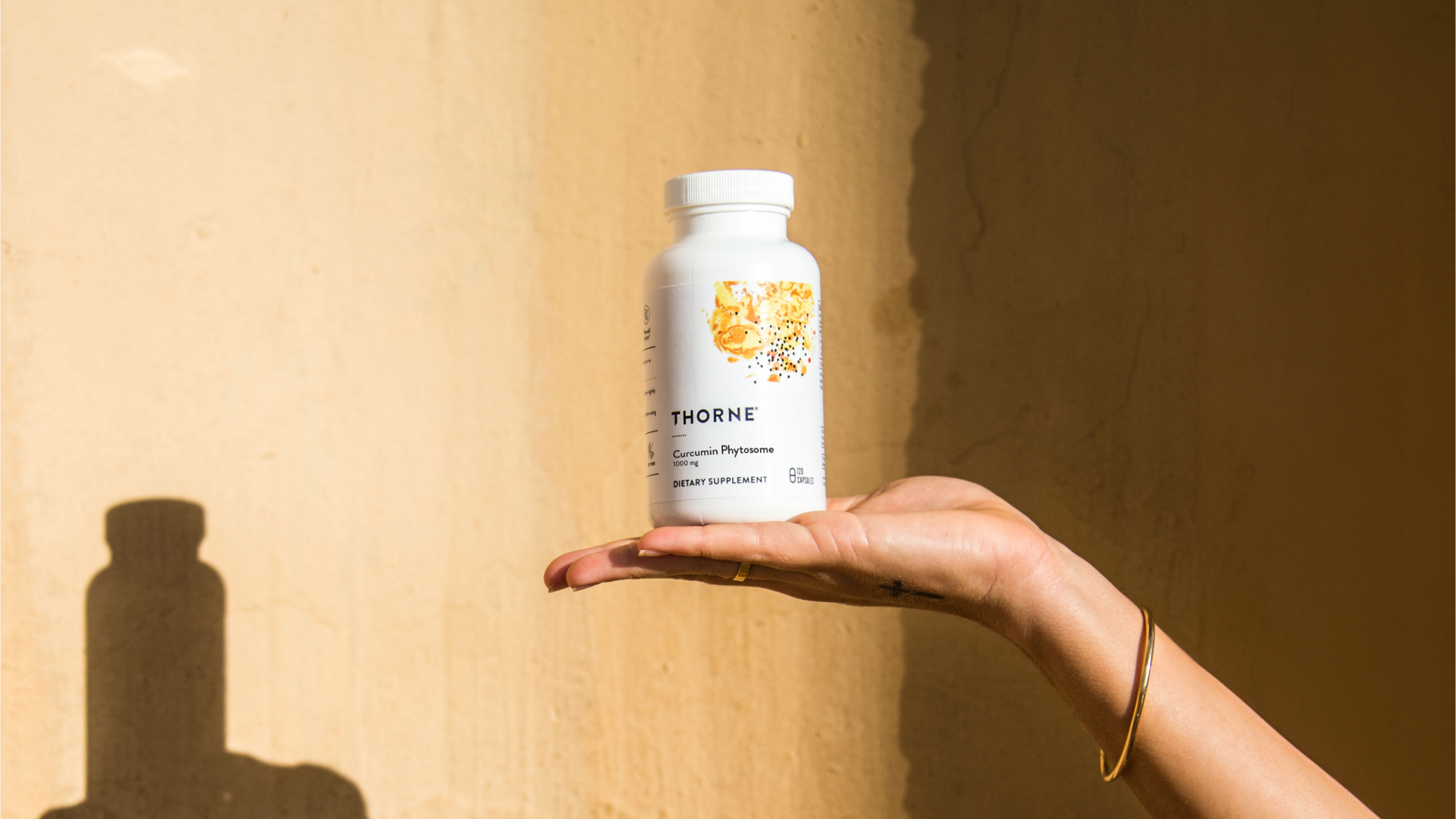As we age, our DNA accrues damage. The fragile nucleic acids that structure DNA are highly sensitive to sunlight, inflammation, and other factors that come along with living life. Because of this, all organisms feature DNA repair machinery.1
That’s where NAD+ comes in. This industrious molecule is a repair crew, an energy maker, and a longevity activator all in one. And so, if you’re interested in healthy aging, it’s wise to familiarize yourself with NAD+.
NAD+ and Aging
Unfortunately, as we age, NAD+ levels fall. In fact, by middle age NAD+ levels have plummeted to half that of our youth.2 Why? Because:

- We make less of it
- We use more of it (we require lots of NAD+ to repair age-related DNA damage)
- More of it gets destroyed (thanks to an enzyme called CD38 that “gobbles up” NAD+ at an accelerated rate as we age)2
This decline, research suggests, does not help us age gracefully.3 Aging is marked by genomic instability, mitochondrial dysfunction, and various functional declines linked to NAD+ depletion. But there’s good news. Replenishing NAD+ levels “may slow or may even reverse some aspects of aging,” according to a 2018 paper in Translational Medicine of Aging.3
The last decade of NAD+ research has been exciting. For instance, researchers have shown that NAD+ replenishment increases lifespan in yeast, worms, and rodents.4 More recently, noted Harvard researcher David Sinclair (and colleagues) published a 2023 study suggesting that restoring NAD+ levels with the NAD+ precursor, nicotinamide mononucleotide (NMN), improves biomarkers of cardiometabolic health in middle-aged and older adults.5 Read on to learn more about the science behind NAD+ along with natural ways to support NAD+ levels.
What is NAD+?
NAD+ (nicotinamide adenine dinucleotide) is a molecule—a co-factor—that facilitates chemical reactions in your body. These reactions support the function of the nutrient-sensing pathways mTor and AMPK, which influence metabolism, repair, and aging itself. NAD+ also regulates a group of proteins called sirtuins crucial for DNA expression.
NAD+ is so essential to life that it’s found in all living cells. Let’s review its primary functions.
DNA Repair
NAD+ supports DNA repair by activating an enzyme called PARP-1. The activation of PARP-1 is one of the main drivers of NAD+ depletion. For example, the activation of PARP-1 to repair skin sensitive to UV light depletes significant amounts of NAD+.6
Mitochondrial health
Mitochondria create energy for our cells. But as we age, these power plants start to sputter.
Enter NAD+. Researchers found that supplementing old mice with the NAD+ precursor NMN, reversed age-related mitochondrial declines in various tissues of the mice, revitalizing youthful-functioning mitochondria.
Energy metabolism
NAD+ accepts and donates electrons to turn glucose and fatty acids into ATP.4 (It helps turn food into energy.) These “redox reactions” are essential to life.
Sirtuin activation
If you’ve dabbled in longevity research, you’ve probably heard of longevity genes. These enzymes, also called sirtuins, are central to aging and regulate the sleep-wake cycle among other things.
Researchers have shown that supplementing mice with “sirtuin activators” (like NAD+ precursors and resveratrol) have improved endurance, organ function, and overall longevity.7
Something to note: higher NAD+ levels appear to help activate sirtuins, triggering DNA repair and other beneficial processes.8 With lower NAD+ levels, sirtuins stay switched off and you lose all of those anti-aging benefits.
4 Ways To Replenish NAD+ Naturally
For best results, take a holistic approach to NAD+ repletion. Consider supplements like NMN—yes—but don’t neglect lifestyle factors like exercise, fasting, and sun protection.
#1: Exercise
Exercise keeps you young. It keeps you strong and functional while reducing the risk for most chronic diseases.9
NAD+ may be part of this story. Exercise supports NAD+ levels by increasing the activity of the NAD-synthesis enzyme, nicotinamide phosphoribosyltransferase (NAMPT.)10
And it’s a significant increase. A 2019 paper in Physiological Reports found that aerobic and strength exercise increased NAMPT levels in adults over 55 by 28 and 30 percent respectively.10
#2: Fasting and calorie restriction
Your NAD+ production system is continuously monitoring your energy supply. When energy levels are low—such as when you haven’t eaten much—NAD+ production ramps up.
This extra NAD+ activates sirtuins and puts your body into “repair mode.” 11 In repair mode, cells clean themselves via autophagy and mitophagy, and PARP-1 restores damaged DNA.
Calorie restriction can kick off this system, but be mindful not to overdo it. The dangers of chronic undereating—muscle loss, bone density issues, fatigue—are no joke.
A safer strategy is temporarily restricting calories with intermittent fasting (IF). There’s still a danger of undereating, but IF is more about limiting when vs. how much you eat.
#3: Curtail DNA-damaging activities
Anything that damages DNA will deplete NAD+. And though you can’t stop all age-related DNA damage, you can avoid the big offenders.
Take sun exposure, for instance. Some sun exposure is healthy, as it helps you synthesize vitamin D—but too much UV light damages skin and sucks up considerable amounts of NAD+.
#4: Support methylation
Methylation means adding methyl groups to DNA, proteins, or other molecules. This process influences many biochemical systems and functions in the body.
One of these systems is NAD+ production. Healthy methylation helps you recycle NAD+ (i.e., keep levels higher) through the aptly-named “salvage pathway.” 12
A fundamental way to support methylation is to ensure you get enough methyl factors like B12, riboflavin, and TMG.
What about supplementing NAD+?
First of all, consuming NAD+ itself in traditional supplement form doesn’t effectively replenish NAD+ levels due to the molecule’s propensity to break down in the gut. And while niacin (vitamin B3) is an essential nutrient and an NAD+ precursor, it’s an inefficient NAD+ supplement due to its inability to be absorbed intact.13 Not to mention, high doses of niacin have the unfortunate side effect of causing a ruby-red face, better known as niacin flush.
Let’s discuss NR and NMN because they’re the two primary NAD+ replenishment supplements on offer. Research suggests that both may support healthy cellular NAD+ levels.4, 14 NR and NMN dance together. When NR enters cells, an enzyme called nicotinamide riboside kinase converts it to NMN. In other words, NMN (also found in many foods) is a more direct precursor to NAD+ than NR.
NMN can also enter cells directly via a dedicated transporter called Slc12a8. This 2019 discovery shook up the world of aging research.15
There’s plenty of preclinical evidence on NMN supporting the restoration of NAD+ levels and slowing aging in animals.4 And clinical studies are trickling in (like the previously mentioned Sinclair study) that suggest NMN supplementation supports the replenishment of NAD+ and may support metabolic health in humans.5, 16, 14 Taking a high-absorption NMN supplement may be a smart addition to your holistic NAD+ regimen.
- Zhu XH, Lu M, Lee BY, Ugurbil K, Chen W. In vivo NAD assay reveals the intracellular NAD contents and redox state in healthy human brain and their age dependences. Proc Natl Acad Sci U S A. 2015 Mar 3;112(9):2876-81. doi: 10.1073/pnas.1417921112. Epub 2015 Feb 17. PMID: 25730862; PMCID: PMC4352772.
- Shultz M, Sinclair, D. Why NAD+ Declines during Aging: It’s Destroyed. Cell Met. 2016 Jun 14: 23(6). https://doi.org/10.1016/j.cmet.2016.05.022
- Yahyah Aman, Yumin Qiu, Jun Tao, Evandro F. Fang, Therapeutic potential of boosting NAD+ in aging and age-related diseases, Translational Medicine of Aging, Volume 2, 2018, Pages 30-37, ISSN 2468-5011, https://doi.org/10.1016/j.tma.2018.08.003.
- Rajman L, Chwalek K, Sinclair D. Therapeutic Potential of NAD-Boosting Molecules: The In Vivo Evidence. Cell Met. 2018 Mar 06: (27)3. https://doi.org/10.1016/j.cmet.2018.02.011
- Pencina KM, Valderrabano R, Wipper B, Orkaby AR, Reid KF, Storer T, Lin AP, Merugumala S, Wilson L, Latham N, Ghattas-Puylara C, Ozimek NE, Cheng M, Bhargava A, Memish-Beleva Y, Lawney B, Lavu S, Swain PM, Apte RS, Sinclair DA, Livingston D, Bhasin S. Nicotinamide Adenine Dinucleotide Augmentation in Overweight or Obese Middle-Aged and Older Adults: A Physiologic Study. J Clin Endocrinol Metab. 2023 Jul 14;108(8):1968-1980. doi: 10.1210/clinem/dgad027. PMID: 36740954.
- Fang E, Scheibye-Kudsen M, Brace L, Kassahun H, SenGupta T, Nilsen H, Mitchell J, Croteau D, Bohr V. Cell Met. Defective Mitophagy in XPA via PARP-1 Hyperactivation and NAD+/SIRT1 Reduction. 2014 May 08: 157(4). https://doi.org/10.1016/j.cell.2014.03.026
- Bonkowski MS, Sinclair DA. Slowing ageing by design: the rise of NAD+ and sirtuin-activating compounds. Nat Rev Mol Cell Biol. 2016 Nov;17(11):679-690. doi: 10.1038/nrm.2016.93. Epub 2016 Aug 24. PMID: 27552971; PMCID: PMC5107309.
- Imai S, Guarente L. NAD+ and sirtuins in aging and disease. Trends Cell Biol. 2014 Aug;24(8):464-71. doi: 10.1016/j.tcb.2014.04.002. Epub 2014 Apr 29. PMID: 24786309; PMCID: PMC4112140
- Piercy KL, Troiano RP, Ballard RM, et al. The Physical Activity Guidelines for Americans. JAMA. 2018;320(19):2020–2028. doi:10.1001/jama.2018.14854
- de Guia RM, Agerholm M, Nielsen TS, Consitt LA, Søgaard D, Helge JW, Larsen S, Brandauer J, Houmard JA, Treebak JT. Aerobic and resistance exercise training reverses age-dependent decline in NAD+ salvage capacity in human skeletal muscle. Physiol Rep. 2019 Jul;7(12):e14139. doi: 10.14814/phy2.14139. PMID: 31207144; PMCID: PMC6577427.
- Chen D, Bruno J, Easlon E, Lin S, Cheng H, Alt F, Guarente L. Tissue-specific regulation of SIRT1 by calorie restriction. Genes & Dev. 2008. 22: 1753-1757 doi: 10.1101/gad.1650608
- Xie, N., Zhang, L., Gao, W. et al. NAD+ metabolism: pathophysiologic mechanisms and therapeutic potential. Sig Transduct Target Ther 5, 227 (2020). https://doi.org/10.1038/s41392-020-00311-7
- C L Baum, J Selhub, I H Rosenberg; The hydrolysis of nicotinamide adenine nucleotide by brush border membranes of rat intestine. Biochem J 15 April 1982; 204 (1): 203–207. doi: https://doi.org/10.1042/bj2040203
- Huang H. A Multicentre, Randomised, Double Blind, Parallel Design, Placebo Controlled Study to Evaluate the Efficacy and Safety of Uthever (NMN Supplement), an Orally Administered Supplementation in Middle Aged and Older Adults. Front Aging. 2022 May 5;3:851698. doi: 10.3389/fragi.2022.851698. PMID: 35821806; PMCID: PMC9261366.
- Grozio A, Mills KF, Yoshino J, Bruzzone S, Sociali G, Tokizane K, Lei HC, Cunningham R, Sasaki Y, Migaud ME, Imai SI. Slc12a8 is a nicotinamide mononucleotide transporter. Nat Metab. 2019 Jan;1(1):47-57. doi: 10.1038/s42255-018-0009-4. Epub 2019 Jan 7. Erratum in: Nat Metab. 2019 Jul;1(7):743. PMID: 31131364; PMCID: PMC6530925.
- Mihoko Yoshino et al. ,Nicotinamide mononucleotide increases muscle insulin sensitivity in prediabetic women.Science372,1224-1229(2021).DOI:10.1126/science.abe998
Share:
Related Posts

Thorne Celebrates 40 Years of Good Health
Maggie Chandler April 12, 2024 As it’s often said at Thorne, healthy ageing is a gift. It’s about embracing the way you feel, your experiences,

Healthy Coffee Alternatives: When to Quit Coffee & What to Drink Instead
Dr Thomas Wnorowski February 16, 2024 Key Points: Does the idea of quitting coffee make you feel all sorts of (terrible) things? It’s common. But

How Your Social Network Impacts Your Mental Health
Austin Ruff April 17, 2024 Humans are inherently social creatures. It’s in our nature to connect and want to be connected to the people around

Microbiota-Gut-Brain Axis: Behaviour and Dementia Implications
People take supplements to improve or optimize their health. So what happens when you look at the label, and the ingredient list is filled with

Gut Bacteria and GABA
People take supplements to improve or optimize their health. So what happens when you look at the label, and the ingredient list is filled with


